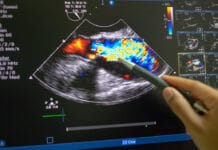Most people are aware of the systemic diseases caused by smoking. Many, though, are unaware of the multiple oral health implications that are associated with smoking. Some oral health issues associated with smoking may be a precursor to systemic disease. In addition to improving oral health, dental professionals can encourage smoking cessation before the onset of systemic diseases that may become life-threatening.
Xerostomia/Hyposalivation
Xerostomia/hyposalivation is associated with multiple dental problems, including cervical caries, gingivitis, tooth mobility, candidiasis, and poor nutrition. Cigarette smoke contains 300 to 400 carcinogens and around 4,000 bioactive chemical compounds. These substances cause structural damage and functional changes in saliva. In a study comparing the risk of hyposalivation in smokers versus nonsmokers, the prevalence of hyposalivation among smokers was 43%. This is significantly higher than nonsmokers, of which 8% were found to have hyposalivation using a modified Schirmer test.1,2,5
Following exposure to cigarette smoke, multiple salivary enzymes are found to be significantly reduced, including amylase, lactic dehydrogenase (LDH), and acid phosphatase (ACP). These enzymes are known for their protective functions against microorganisms, toxins, and various oxidants that lead to oxidative stress. Upon exposure to nine puffs of cigarette smoke, amylase lost 33.8%, LDH lost 57%, and ACR lost 71% of their activities. This may explain the increase in dental disease often seen in patients that smoke, even in those that lack evidence of xerostomia/hyposalivation.3,4
Though there seems to be little to no published evidence on the quantity of saliva after smoking cessation, there is evidence that the quality of the saliva improves. An increase in mucosal immunoglobulin levels has been detected after smoking cessation as well as an increase in antioxidant enzymes. Both provide protection from multiple oral diseases such as neoplastic lesions, reduced caries rate, and candidiasis.19,20
Periodontal Disease and Tooth Loss
It has long been understood that smoking contributes to the onset and progression of periodontal disease. In the United States, 41.9% of periodontal cases are attributed to smoking, and another 10.9% are associated with prior smoking habits. Additionally, epidemiology studies have shown smokers have a poorer outcome following nonsurgical periodontal therapy than nonsmokers. This is greatly attributed to the interference of cigarette smoke with oxidative stress mechanisms, which inhibit defenses against biofilm as well as vascular constriction, which contributes to slow wound healing.6
Smoking is considered the most important preventable risk factor for periodontal disease.
The good news is that smoking cessation has a positive effect on the periodontium and has been shown to decrease the rate of progression. Although adverse effects of smoking may persist for some time after cessation, the damage that occurs from smoking may be reversible after quitting.7,8
Periodontal disease may be a precursor for COPD in patients that smoke. In a population-based study that aimed to identify a link between periodontal disease and COPD, the authors determined “association of COPD with periodontal disease showed that, after controlling for possible confounders, suffering from COPD increased the probability of reporting periodontal disease by 21% (OR: 1.21; 95% CI: 1.12–1.30).” The authors go on to address the association between obesity and current or ex-smokers. These findings do not determine if these diseases are bi-directional, if one leads to another, or if they are present concurrently. Follow-up studies are needed to clarify this relationship.9
Oral Cancer
Oral cancer is the sixth most common malignancy in the world. It has long been established through epidemiological studies that smoking plays a role in the development of some oral cancers. Certain epigenetic factors have been identified that may cause certain individuals to be more susceptible to oral cancer caused by smoking. These factors include genetic polymorphisms in the genes coding for the enzymes P450 and glutathione-S-transferase.10,11
The mutations in these genes are believed to be directly caused by the carcinogens in tobacco smoke. Certain carcinogens in tobacco smoke and their metabolites bind with DNA that forms DNA adducts. If these adducts are not removed by the body through the body’s repair system, these adducts lead to mutations that often become cancer.11,12
However, studies indicate former smokers have a lower risk of certain oral cancers than current smokers. Though the decline in risk takes some time, around 10 years after smoking cessation, the risk declines by around 40% after the 10-year mark.13
Additional evidence on the role of surviving − an apoptosis regulator gene that regulates the caspase cascade − shows it may contribute to the onset and progression of oral cancer. Survivin expression is a predictor of malignancy by providing tolerance and inhibiting apoptosis of genes that display mutations it contributes to the development of cancer. Studies show an increase in the expression of survivin in individuals who smoke. A reduction in survivin has been documented in people after smoking cessation.14
Apical Periodontitis
In a systematic review and meta-analysis published during 2020, the authors evaluated “scientific evidence to support an association between tobacco smoking and greater prevalence of apical periodontitis and/or root canal treatment” The review provides insight into the possible mechanism as well as the average increased risk. (Pinto et al. 2020)
The results of the meta-analysis indicate smokers have twice the incidence of periapical periodontitis and/or root canal treatment. This is speculated to be due to reduced blood supply to the apices and surrounding bone. Reduced blood supply also restricts the availability of nutrients and oxygenation, leading to necrosis of the nerve tissue. Restricted blood supply also delays healing after root canal treatment. Additionally, it impairs the immune response leading to a strong often uncontrolled inflammatory response.15
Another systematic review and meta-analysis indicated that smoking increases the risk of root canal treatment failure. Again, this review indicates decreased healing after treatment associated with a lack of nutrients and oxygen supply as well as pro-inflammatory cytokines and impaired immune response as a possible cause of the increased risk of root canal treatment failure.16
A study with a follow-up that ranged from two to 28 years found the longer a person smokes, the higher the risk of developing apical periodontitis leading to an increased need for root canal treatment. However, the risk lessens with the length of abstinence, reducing the risk of apical periodontitis. This implies a dose-response relationship between apical periodontitis and smoking.21
Smoking Cessation
There are multiple options for patients to be successful in their smoking cessation journey. Achieving long-lasting cessation from smoking is very difficult. Counseling patients and providing resources may help patients achieve success. Though there are multiple studies to assess the best options with the highest success rate, all the studies report high dropout rates, which supports the ascertain of how difficult smoking cessation can be for some individuals.
Due to the difficulty of smoking cessation in patients, it can take multiple counseling sessions during dental appointments, as well as multiple adjunctives such as lozenges, gum, pharmaceuticals, and patches to find the right option for each individual patient. Not all treatments will work for every patient, and the need to be adaptable with the options discussed with patients is important and may lead to a higher success rate.
In some cases, quitting “cold turkey” is successful. In a study published in 2017, the authors found “people who prefer gradual cessation are less likely to be successful at quitting.” This study goes on to recommend counseling patients in a way that would encourage abrupt smoking cessation for better success.17 As with adjunctive options, I don’t think this can be applied across the board for each individual patient. This way of counseling may set patients up for failure. Instead, letting the patient lead the way with suggestions they would like to try while the dental professional provides support and encouragement seems it may be a better option in most cases.
Conclusion
Smoking has been considered a major public health concern for decades. According to the Centers for Disease Control and Prevention, “cigarette smoking is the leading cause of preventable disease and death in the United States.” Though smoking rates have declined over the years, as of 2018, 14 of every 100 adults smoke in the U.S.18 This statistic is still too high.
In addition to improving oral health, dental professionals can play a role in reducing the incidence of smoking-related deaths by consistently and patiently discussing smoking cessation with patients. Being aware this will most likely take time to achieve may help reduce disappointment in the dental professional as well as the patient. Smoking cessation counseling will not be an act that provides immediate gratification, but persistence and patience may save a tooth or, better yet, a life.
Now Check Out the Self-Study, Peer-Reviewed CE Courses from Today’s RDH!
Listen to the Today’s RDH Dental Hygiene Podcast Below:
References
- Rad, M., Kakoie, S., Niliye Brojeni, F., Pourdamghan, N. Effect of Long-term Smoking on Whole-mouth Salivary Flow Rate and Oral Health. J Dent Res Dent Clin Dent Prospects. 2010; 4(4): 110-114. doi:10.5681/joddd.2010.028. Retrieved from https://www.ncbi.nlm.nih.gov/pmc/articles/PMC3429961/.
- Dyasanoor, S., Saddu, S.C. Association of Xerostomia and Assessment of Salivary Flow Using Modified Schirmer Test among Smokers and Healthy Individuals: A Preliminutesary Study. J Clin Diagn Res. 2014; 8(1): 211-213. doi:10.7860/JCDR/2014/6650.3846. Retrieved from https://www.ncbi.nlm.nih.gov/pmc/articles/PMC3939554/.
- Nagler, R., Lischinsky, S., Diamond, E., Drigues, N., Klein, I., Reznic,k AZ. Effect of cigarette smoke on salivary proteins and enzyme activities. Arch Biochem Biophys. 2000 Jul 15; 379(2): 229-36. doi: 10.1006/abbi.2000.1877. PMID: 10898939. Retrieved from https://pubmed.ncbi.nlm.nih.gov/10898939/.
- Zappacosta, B., Persichilli, S., Mordente, A., Minucci, A., Lazzaro, D., Meucci, E., Giardina, B. Inhibition of salivary enzymes by cigarette smoke and the protective role of glutathione. Hum Exp Toxicol. 2002 Jan; 21(1): 7-11. doi: 10.1191/0960327102ht202oa. PMID: 12046726. Retrieved from https://pubmed.ncbi.nlm.nih.gov/12046726/.
- Dyasanoor, S., Saddu, S.C. Association of Xerostomia and Assessment of Salivary Flow Using Modified Schirmer Test among Smokers and Healthy Individuals: A Preliminutesary Study. J Clin Diagn Res. 2014 Jan; 8(1): 211-3. doi: 10.7860/JCDR/2014/6650.3846. Epub 2014 Jan 12. PMID: 24596777; PMCID: PMC3939554. Retrieved from https://pubmed.ncbi.nlm.nih.gov/24596777/.
- Chang, C.H., Han, M.L., Teng, N.C., et al. Cigarette Smoking Aggravates the Activity of Periodontal Disease by Disrupting Redox Homeostasis- An Observational Study. Sci Rep. 2018; 8(1): 11055. Published 2018 Jul 23. doi:10.1038/s41598-018-29163-6. Retrieved from https://www.ncbi.nlm.nih.gov/pmc/articles/PMC6056417/.
- Alexandridi, F., Tsantila, S., Pepelassi, E. Smoking cessation and response to periodontal treatment. Aust Dent J. 2018 Jun; 63(2): 140-149. doi: 10.1111/adj.12568. Epub 2017 Oct 24. PMID: 28921548. Retrieved from https://onlinelibrary.wiley.com/doi/full/10.1111/adj.12568.
- Nociti, F.H. Jr., Casati, M.Z., Duarte, P.M. Current perspective of the impact of smoking on the progression and treatment of periodontitis. Periodontol 2000. 2015 Feb; 67(1): 187-210. doi: 10.1111/prd.12063. PMID: 25494601. Retrieved from https://pubmed.ncbi.nlm.nih.gov/25494601/.
- Lopez-de-Andrés, A., Vazquez-Vazquez, L., Martinez-Huedo, M.A., et al. Is COPD associated with periodontal disease? A population-based study in Spain. Int J Chron Obstruct Pulmon Dis. 2018; 13: 3435-3445. Published 2018 Oct 18. doi:10.2147/COPD.S174898. Retrieved from https://www.ncbi.nlm.nih.gov/pmc/articles/PMC6203114/.
- Kumar, M., Nanavati, R., Modi, T.G., Dobariya, C. Oral cancer: Etiology and risk factors: A review. J Cancer Res Ther. 2016 Apr-Jun; 12(2): 458-63. doi: 10.4103/0973-1482.186696. PMID: 27461593. Retrieved from https://pubmed.ncbi.nlm.nih.gov/27461593/.
- South, AP, den Breems, N.Y., Richa, T., Nwagu, U., Zhan, T., Poojan, S., Martinez-Outschoorn, U., Johnson, J.M., Luginbuhl, A.J., Curry, J.M. Mutation signature analysis identifies increased mutation caused by tobacco smoke associated DNA adducts in larynx squamous cell carcinoma compared with oral cavity and oropharynx. Sci Rep. 2019 Dec 17; 9(1): 19256. doi: 10.1038/s41598-019-55352-y. PMID: 31848367; PMCID: PMC6917707. Retrieved from https://pubmed.ncbi.nlm.nih.gov/31848367/.
- Phillips, D.H. Smoking-related DNA and protein adducts in human tissues. Carcinogenesis. 2002 Dec; 23(12): 1979-2004. doi: 10.1093/carcin/23.12.1979. PMID: 12507921. Retrieved from https://pubmed.ncbi.nlm.nih.gov/12507921/.
- Bosetti, C., Gallus, S., Garavello, W., La Vecchia, C. Smoking cessation and the risk of oesophageal cancer: An overview of published studies. Oral Oncol. 2006 Nov; 42(10): 957-64. doi: 10.1016/j.oraloncology.2006.03.007. Epub 2006 Aug 21. PMID: 16919996. Retrieved from https://pubmed.ncbi.nlm.nih.gov/16919996/.
- Lima, C.F., Crastechini, E., Dos Santos, N.C., Prado Ribeiro, A.C., Brandão, T.B, Castro, F.C.F., Issa, J.S., Almeida, J.D. Smoking cessation leads to changes in survivin expression in oral mucosa. J Oral Pathol Med. 2018 Mar; 47(3): 293-298. doi: 10.1111/jop.12664. Epub 2017 Dec 7. PMID: 29160903. Retrieved from https://pubmed.ncbi.nlm.nih.gov/29160903/.
- Pinto, K.P., Ferreira, C.M., Maia, L.C., Sassone, L.M., Fidalgo, T.K.S., Silva, EJNL. Does tobacco smoking predispose to apical periodontitis and endodontic treatment need? A systematic review and meta-analysis. Int Endod J. 2020 Aug; 53(8): 1068-1083. doi: 10.1111/iej.13316. Epub 2020 Jun 1. PMID: 32344459. Retrieved from https://pubmed.ncbi.nlm.nih.gov/32344459/.
- Cabanillas-Balsera, D., Segura-Egea, J.J., Bermudo-Fuenmayor, M., Martín-González, J., Jiménez-Sánchez, M.C., Areal-Quecuty, V., Sánchez-Domínguez, B., Montero-Miralles, P., Velasco-Ortega, E. Smoking and Radiolucent Periapical Lesions in Root Filled Teeth: Systematic Review and Meta-Analysis. J Clin Med. 2020 Oct 29; 9(11): E3506. doi: 10.3390/jcm9113506. PMID: 33138302. Retrieved from https://pubmed.ncbi.nlm.nih.gov/33138302/.
- Smith, D.K., Miller, D.E., Mounsey, A. PURLs: “Cold turkey” works best for smoking cessation. J Fam Pract. 2017; 66(3): 174-176. Retrieved from https://www.ncbi.nlm.nih.gov/pmc/articles/PMC5360817//
- Smoking and Tobacco Use. (2019, November 18). Current Cigarette Smoking Among Adults in the United States. Centers for Disease Control and Prevention. Retrieved from https://www.cdc.gov/tobacco/data_statistics/fact_sheets/adult_data/cig_smoking/index.htm/
- Hersey P, Prendergast D, Edwards A. Effects of cigarette smoking on the immune system. Follow-up studies in normal subjects after cessation of smoking. Med J Aust. 1983 Oct 29; 2(9): 425-9. PMID: 6633406. Retrieved from https://pubmed.ncbi.nlm.nih.gov/6633406/
- Giuca, M.R., Giuggioli, E., Metelli, M.R., Pasini, M., Iezzi, G., D’Ercole, S., Tripodi, D. Effects of cigarette smoke on salivary superoxide dismutase and glutathione peroxidase activity. J Biol Regul Homeost Agents. 2010 Jul-Sep; 24(3): 359-66. PMID: 20846484. Retrieved from https://pubmed.ncbi.nlm.nih.gov/20846484/
- Krall, E.A., Abreu Sosa, C., Garcia, C., Nunn, M.E., Caplan, D.J., Garcia, R.I. Cigarette smoking increases the risk of root canal treatment. J Dent Res. 2006; 85(4): 313-317. doi:10.1177/154405910608500406. Retrieved from https://www.ncbi.nlm.nih.gov/pmc/articles/PMC2225991/












